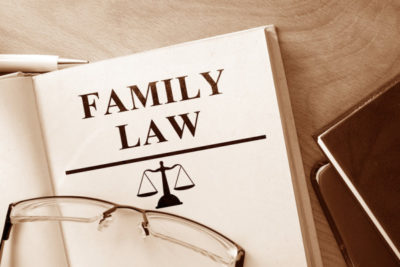Grandparents and Visitation: How They Can Petition For their Rights in CA
 The discussions on visitation rights usually center on parents, but other relatives such as grandparents can also petition for these rights in California. The family law courts have mechanisms in place to help ensure grandparents are able to spend time and interact with their grandchildren, even if both parents are able to provide and care for the children.
The discussions on visitation rights usually center on parents, but other relatives such as grandparents can also petition for these rights in California. The family law courts have mechanisms in place to help ensure grandparents are able to spend time and interact with their grandchildren, even if both parents are able to provide and care for the children.
Today, we’re honing in on this topic by reviewing the process that grandparents must follow when petitioning for visitation rights in CA. You’ll find a general overview here, but for specific legal guidance remember to consult with a qualified legal professional.
All this in mind, let’s review the steps that grandparents must take when looking to establish the visitation rights they and their grandchildren are entitled to.
File a Petition via a Form FL-300
The process begins when a grandparent formally files a petition for visitation rights. The specific process can vary from county to county, and differs when there are other legal issues at play such as custody disputes between the parents, and pending divorce, and more.
That said, this process almost always involves downloading and filling out a Form FL-300. This form asks for details about the relationships between all involved parties and gives grandparents a chance to explain why they’re seeking visitation rights via the family law courts.
This form should be carefully and diligently filled out, as it can impact your chances of success. To avoid taking any unnecessary risks, make sure to have your work checked out by a qualified legal professional.
Serve the Petition Papers to the Parents
The next steps then involve actually serving the papers to the parents. This makes them aware that a claim for visitation rights has been formally opened. Depending on the nuances of your case, you may either be able to mail/deliver this yourself, or you may have to rely on a formal process server who will need to secure a proof of service.
Moving Forward with the Court Proceedings
This finally moves all parties to the formal mediation or court proceeding, which is where all parties will be given an opportunity to come to an agreement. When collaboration seems impossible, a family law judge can step in with his/her assessment and decide based on what he/she has learned during the proceedings.
Whether you manage to resolve your dispute during mediation, or need to have the family law courts weigh in, do not proceed without a qualified attorney on your side. Take better control of your proceedings with the help of our shrewd attorneys.
Let our decades of experience work for you as you fight to preserve the rights afforded to you and your loved ones. Learn more about how we can help with this issue, or with any other issue relating to family law in CA. Give us a call at 925-271-0999 today to book a initial consultation.
